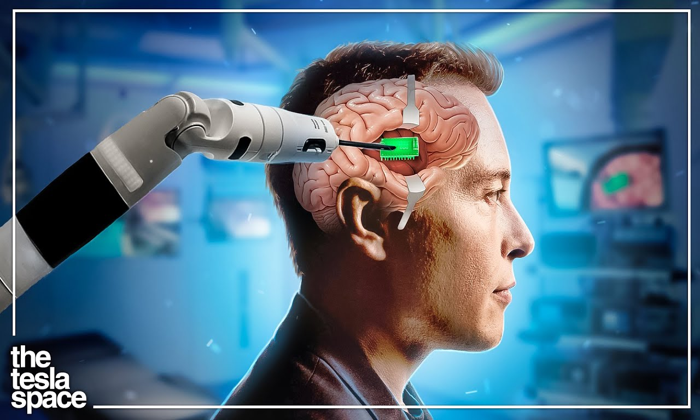Neuralink human trials are finally underway, with Elon Musk’s innovative brain-computer interface company opening its patient registry to those eager to explore the groundbreaking possibilities of mind-controlled technology. This pioneering initiative aims to assist individuals with severe disabilities, particularly quadriplegia, giving them a powerful new tool to communicate and interact with the digital world. As of now, only a select group of participants have been granted access to this cutting-edge technology, but the potential for significant advancements in quadriplegia technology is palpable. With applications now accepted globally, the concept of a telepathy cybernetic implant is becoming increasingly tangible. Neuralink’s experimentation opens doors to an intriguing future, where the intricate bond between the human mind and artificial intelligence can be significantly strengthened.
The commencement of human trials by Neuralink marks a significant milestone in the development of brain-machine interfaces, a groundbreaking technology that aims to revolutionize how individuals with disabilities interact with technology. Founded by visionary entrepreneur Elon Musk, this initiative seeks to leverage advanced neuroscience to establish direct connections between the human brain and computers. The ability to communicate and control devices through thought alone is a tantalizing prospect, especially for those suffering from conditions like paraplegia or severe vision impairments. By fostering a Neuralink patient registry, this program not only targets physical rehabilitation but also addresses the broader implications of enhancement and communication through cybernetic means. As this research progresses, the evolutionary path towards a future where minds can merge with machines sparks excitement and ethical discussions alike.
Understanding Neuralink’s Human Trials
Neuralink’s initiative for human trials is a transformational moment in the world of neuroscience and technology. By opening its patient registry to individuals with quadriplegia, Neuralink is not just advancing the boundaries of brain-computer interfaces, but also providing hope for many who have been limited by severe disabilities. This latest move comes after the U.S. Food and Drug Administration’s recent approval, allowing the company to evaluate its brain implants in real-time human scenarios. As Neuralink prepares to gather data from its initial participants, the world watches closely to assess the potential impacts of this groundbreaking technology.
Being a participant in Neuralink’s human trials represents an opportunity for individuals to potentially regain a level of independence previously thought unattainable. Specifically, candidates suffering from quadriplegia can explore ways to use thought-controlled devices to interact with computers and smartphones. This technology aims not just to assist in communication but also to enhance everyday activities, making the intersection of human capability and machine interaction smoother and more intuitive. As advancements in brain-computer interface technology unfold, the implications for personal empowerment and communications in various sectors are tremendous.
The Technology Behind Neuralink’s Innovations
At its core, Neuralink’s technology revolves around sophisticated brain-computer interfaces that facilitate a direct connection between human thought and digital devices. The company’s goal is not only to assist those with medical conditions but also to explore the possibilities of telepathy cybernetic implants; these are devices that could allow users to control technology through mere thought processes. Elon Musk envisions a future where such advancements might even lead to superior cognitive capabilities in humans, creating a landscape where the divide between human and machine continues to diminish.
Neuralink’s technology specifically targets neurological disorders, making it particularly relevant in today’s society where digital interaction is ubiquitous. This integration of innovative technology into treatment options shows potential, especially for quadriplegics who are often deprived of efficient communication methods. With enhanced brain-computer interface setups, these individuals could effectively convey thoughts to computers, thereby transforming their engagement with the world and significantly enriching their quality of life.
Eligibility and Participant Criteria for Neuralink Trials
As Neuralink opens the doors for human trials, the eligible criteria play a crucial role in shaping the study’s outcomes. Candidates must be a minimum of 18 years old and face severe conditions such as quadriplegia or speech impairments. This framework ensures that individuals who participate can potentially demonstrate the real-world effectiveness of the brain-computer interface technology, paving the way for refined treatment options in the realm of neurological conditions.
Moreover, Neuralink’s comprehensive eligibility questionnaire details various medical considerations, such as allergies to metals or contrast dye, thus prioritizing the safety and well-being of participants. Exclusion parameters also set a high standard for participant health, banning individuals with existing implanted devices or ongoing treatment needs that could compromise the integrity of trial results. Such meticulous screening enhances the reliability of the data collected throughout these human trials and guarantees that the findings will meaningfully contribute to future innovations in quadriplegia technology.
Ethical Considerations in Neuralink’s Research
With the advancements and potential promises of technologies like Neuralink’s brain-computer interfaces, ethical dilemmas inevitably arise. The concern surrounding animal welfare during preclinical trials, for instance, has sparked significant debate. Reports of over 1,500 animals’ deaths during Neuralink’s trials raise critical questions about the moral implications of technological progress in science and medicine. It becomes essential to balance innovation with humane practices and ensure that ethical standards are maintained throughout both animal and human trials.
As society advances toward the possibility of integrating human enhancements through devices developed by Neuralink, additional ethical issues surface regarding access, equality, and consent. The quest for enhanced cognitive abilities, such as through telepathy cybernetic implants, prompts inquiries about inequalities that might arise. Who would benefit from such advancements? And how can regulators ensure equitable access to these life-altering technologies? Addressing such topics is vital as Neurolink and similar organizations navigate the complex interplay between opportunity and ethical responsibility.
The Future of Brain-Computer Interface Technology
The future of brain-computer interface technology hinges on the outcomes of Neuralink’s human trials and the broader implications of this research. As the potential applications of this technology evolve, one can envision a transformed landscape where individuals with disabilities have unprecedented access to communication and control over their environments. This groundbreaking move could reshape societal perceptions of disability and open new dialogues on the capabilities of both technology and the human mind.
Moreover, as advancements continue, the prospect of merging artificial intelligence with human cognition presents exciting possibilities. With Elon Musk advocating for a future where individuals could possess superhuman abilities through cybernetic enhancements, it becomes crucial to explore both the positive and adverse consequences of such an integration. As we step into a new frontier with technologies that could enable telepathic communication and elevated cognitive functionalities, the philosophical and practical implications of what it means to be human will need to be closely examined.
Insights from Early Neuralink Participants
Understanding the experiences of the first participants in Neuralink’s human trials is vital to gauge the effectiveness and human impact of this technology. The unique perspectives of individuals like Noland Arbaugh, the first human subject of the trials, provide valuable insights into the realities of living with quadriplegia while exploring a brain-computer interface. As they adapt to using thought-controlled technology, their stories may help illustrate the potential benefits and challenges of integrating such advanced systems into everyday life.
Additionally, documenting these participants’ feedback will be crucial for Neuralink’s research phase and may influence future iterations of the technology. Through their journeys, we can learn not only about the technical capabilities of Neuralink’s brain implants but also the emotional and psychological dimensions of this novel interface. Capturing these narratives will enrich the understanding of how this innovative technology is impacting lives and pave the way for a more comprehensive approach to assistive technologies.
Regulatory Oversight in Neuralink’s Research
Neuralink’s push into human trials has drawn attention to the necessary regulatory oversight that governs such groundbreaking neuroscience. The approval from the U.S. Food and Drug Administration signifies a critical step in enabling Neuralink to investigate its brain-computer interface under controlled conditions. As the company forges ahead, maintaining close communication with regulatory bodies will be vital to ensure compliance with safety and ethical standards.
While the regulatory landscape is complex, its role in ensuring the responsible testing and development of brain-computer interfaces cannot be overstated. Continuous evaluation of participant outcomes and adherence to safety protocols will help build public trust in Neuralink’s mission. As regulatory standards evolve with technological advancements, it is essential for companies like Neuralink to be at the forefront of advocacy for responsible practice in neuroscience innovation.
The Role of Public Perception in Neuralink’s Success
Public perception can significantly impact the success and acceptance of Neuralink’s initiatives. As the company pioneers its human trials, addressing any fears or misconceptions surrounding advanced brain-computer interfaces is crucial in garnering public support. Open communication about the safety, efficacy, and ethical considerations of these technologies will aid in overcoming skepticism and encourage broader acceptance of the innovations that could benefit those with disabilities.
Additionally, Neuralink’s outreach efforts can build awareness and understanding of the potential transformative effects of brain-computer interfaces. Highlighting stories from early trial participants can humanize the technology and showcase its real-world applications. As the public engages with the advancements of Neuralink’s brain-computer interface, shaping a positive narrative around its potential benefits for people with quadriplegia will be essential for driving future advancements and attracting further interest and investment in this groundbreaking field.
Potential Applications Beyond Medical Uses
While Neuralink is initially focused on assisting individuals with severe neurological conditions, the potential applications of brain-computer interfaces extend well beyond medical disabilities. The technology offers prospects for enhancing human capabilities, potentially redefining our interactions with machines and the digital world. As Musk envisions, future applications could include not just therapeutic devices but enhancements that might allow individuals to engage with technology through thoughts alone, effectively revolutionizing the user experience.
In expanding the horizons of cognitive capabilities, this technology opens discussions around telepathy and even the blending of human intelligence with artificial intelligence, creating a new paradigm for communication and interaction. By exploring these potential applications, Neuralink may contribute to a future enriched by enhanced human experiences, where technology merges seamlessly with our daily lives, fostering unprecedented levels of connectivity and convenience.
Frequently Asked Questions
What are the eligibility criteria for Neuralink human trials?
To qualify for Neuralink human trials, applicants must be at least 18 years old and meet specific medical conditions. Eligible candidates include individuals with quadriplegia, paraplegia, vision impairment or blindness, or speech impairments. Additionally, applicants cannot have previous implant devices like pacemakers or deep brain stimulators.
How can I apply for the Neuralink patient registry for human trials?
Individuals interested in participating in Neuralink human trials can sign up through the Neuralink website. The patient registry is open to anyone worldwide with qualifying conditions, specifically those with quadriplegia.
What is the technology being tested in Neuralink human trials?
Neuralink is testing a brain-computer interface that allows individuals to control devices like computers and smartphones using their thoughts. This groundbreaking telepathy cybernetic implant aims to enhance communication and interaction for people with severe disabilities.
What types of conditions does Neuralink’s brain-computer interface target?
Neuralink’s brain-computer interface primarily focuses on providing solutions for neurological conditions. The current human trials aim to assist individuals with quadriplegia, paraplegia, vision impairments, and speech impairments, allowing them to communicate more effectively.
When did Neuralink receive FDA approval for human trials?
Neuralink was granted approval by the U.S. Food and Drug Administration (FDA) to conduct human trials in September 2023, marking a significant step forward in the development of its brain-computer interface technology.
What compensation do participants receive in Neuralink’s human trials?
Participants in Neuralink’s human trials will be compensated for study-related costs, which includes travel expenses, as well as any additional costs associated with their participation in the trials.
Who is the first human participant in Neuralink’s brain-computer interface trials?
The first human participant in Neuralink’s brain-computer interface trials is Noland Arbaugh, a quadriplegic man from Arizona. He enrolled in the trials in January 2024 as part of Neuralink’s initial test subjects.
What potential future applications does Neuralink envision for its technology?
Neuralink aims to not only address severe disabilities but also to create opportunities for human enhancement through its brain-computer interface technology. Elon Musk has suggested a future where users could have added capabilities, such as superintelligence and enhanced sensory perception.
What ethical concerns are associated with Neuralink’s human trials?
Neuralink’s human trials raise ethical concerns regarding safety and animal testing, as previous reports indicated over 1,500 animal fatalities during trials. The company is urged to maintain transparency and prioritize participant welfare as they move forward with human testing.
How does Neuralink’s technology relate to telepathy?
Neuralink’s brain-computer interface is described by Elon Musk as a telepathy cybernetic implant because it enables direct communication between the human brain and devices, allowing users to control them simply by thinking, akin to what one might imagine as telepathic interaction.
| Key Feature | Details |
|---|---|
| Trial Opening | Neuralink has opened its patient registry for human trials globally. |
| Eligible Participants | Eligible individuals include those with quadriplegia, paraplegia, vision impairments, and speech impairments. |
| FDA Approval | In September 2023, Neuralink received FDA approval to conduct human testing. |
| Current Status | So far, only three individuals have been approved for the brain-computer implants. |
| Requirements for Candidates | Candidates must be at least 18 years old and meet specific medical criteria. |
| Prohibited Conditions | Individuals with existing implanted devices, seizure history, or MRIs needed for ongoing conditions cannot participate. |
| Future Plans | Musk envisions a future with optional human enhancements and stronger human-AI connections. |
| Public Controversy | Past animal trials have faced scrutiny, with reports of animal deaths surpassing 1,500 due to experimental procedures. |
Summary
Neuralink human trials mark a significant step in brain-computer interface technology, opening doors for individuals with severe disabilities to explore new means of communication and control through thought. As promising as this technology may be, it also raises questions about ethical implications and safety concerns that need addressing as trials progress. The future of Neuralink’s technology could not only enhance the quality of life for many but redefine the relationship between humans and machines.
Neuralink human trials are making headlines as Elon Musk’s pioneering company opens its doors to those with severe disabilities seeking innovative solutions. With the introduction of its patient registry for brain-computer interfaces, Neuralink aims to empower individuals with quadriplegia to regain autonomy through thought control technology. In a bold step towards redefining human interaction, applicants worldwide can now explore the possibilities of telepathy cybernetic implants to communicate with their devices. Following FDA approval for human testing, Neuralink’s trial signifies a significant advancement in quadriplegia technology, promising hope for many. As we stand on the threshold of a new era in neuroscience, the potential for enhancing human capabilities through brain-computer interfaces is both thrilling and transformative.
The commencement of human testing by Neuralink marks a groundbreaking journey into advanced neurotechnology and its applications for people with significant physical disabilities. Elon Musk’s vision of harnessing brain-computer interface systems invites individuals suffering from conditions like quadriplegia to explore revolutionary options that could enhance their quality of life. Enthusiasts are keenly observing how this innovative patient registry could pave the way for a future where telepathic communication between the mind and machines becomes a reality. The implications of such advancements not only promise to redefine personal connectivity but also challenge existing notions of interaction between humans and technology. As these trials unfold, the landscape of what it means to be human in an increasingly digital world faces an exciting transformation.














